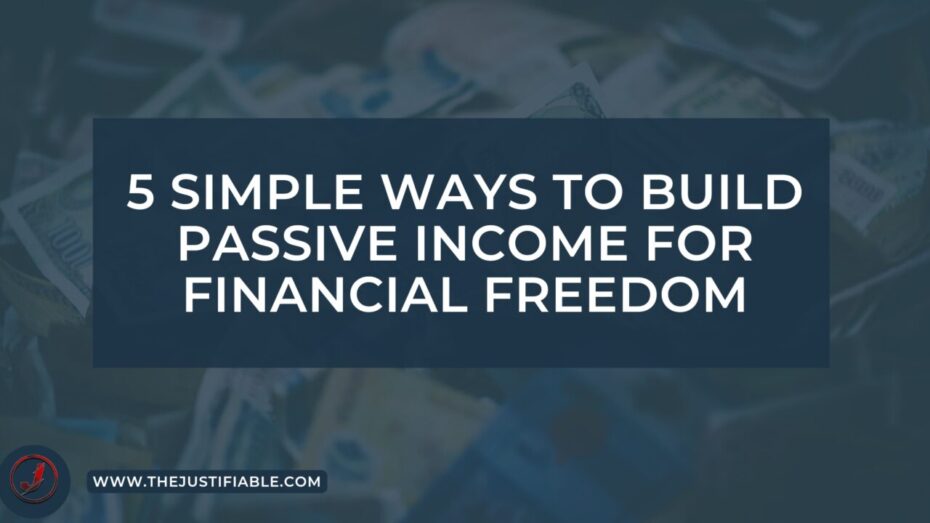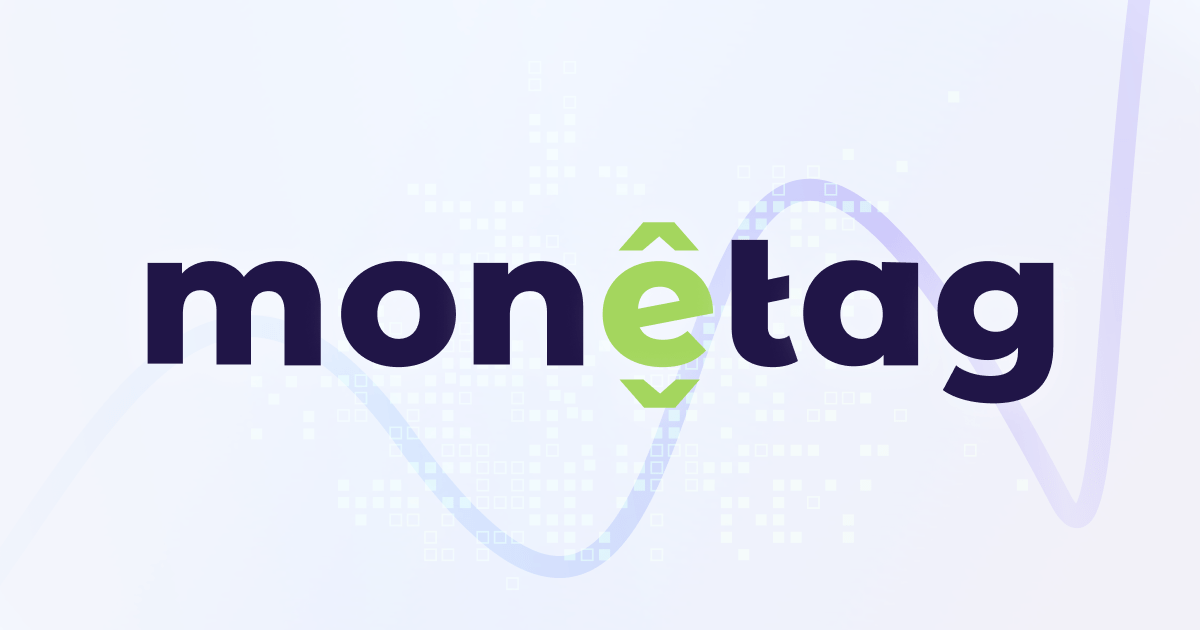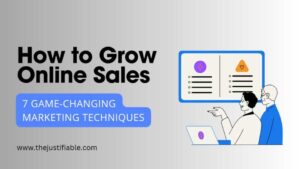Table of Contents
Are you looking for ways to build passive income and achieve financial freedom? Do you want to earn money while you sleep?
In this article, we’ll explore five effective methods that can help you build passive income streams. Whether you’re new to passive income or seeking to expand your current earnings, these strategies will set you on the right path.
1. Unlock Lucrative Earnings with Affiliate Marketing
Affiliate marketing is a proven way to build passive income without needing to create products yourself. By promoting other companies’ offerings, you earn commissions on sales generated through your unique affiliate links. This method is scalable, allowing you to increase earnings by simply expanding your audience and refining your promotional efforts.
I recommend you start with affiliate networks like FlexOffers or ShareASale. These platforms offer a wide variety of affiliate programs, making it easy to find products or services that align with your niche. The potential for passive income is high, as once your promotional content is live, it continues to generate revenue without additional effort.
Partner with Affiliate Networks to Build Passive Income
Choosing the right affiliate network is crucial to building a steady passive income. FlexOffers, ShareASale, and Awin offer reputable programs that align with various niches. Partnering with trusted networks gives you access to high-quality products, making it easier to build trust with your audience and increase conversions.
My suggestion is to focus on networks with products that resonate with your audience. This ensures that your promotions feel authentic, increasing click-through rates and sales. By consistently delivering value through product recommendations, you build credibility, which translates into higher earnings over time.
I advise creating evergreen content that stays relevant over time, such as tutorials, reviews, and guides. These types of content have the potential to generate long-term passive income, as they continue to attract organic traffic through SEO optimization.
Additionally, integrating your affiliate links seamlessly into your content, rather than bombarding readers with them, fosters a more engaging user experience. This helps improve conversion rates and builds loyalty among your audience.
To boost your passive income further, diversify your affiliate partners. Promoting multiple programs from different networks can lead to a wider array of commissions, maximizing your potential earnings.
Best Niches for High Conversions in Affiliate Marketing
Choosing a profitable niche is essential for success in affiliate marketing. Health and wellness, finance, technology, and travel are top-performing niches that consistently deliver high conversions. These sectors offer products with broad appeal and significant consumer demand, making them ideal for building passive income.
I recommend researching niches that genuinely interest you. By aligning with a niche you’re passionate about, you create more engaging content, which resonates with your audience. This leads to higher click-through rates and more conversions, driving your passive income up.
In addition, I advise selecting niches with recurring commission opportunities, such as software-as-a-service (SaaS) products. These provide ongoing commissions for every subscription renewal, helping you generate consistent passive income without additional effort.
It’s also helpful to analyze market trends to identify emerging niches that could offer less competition and higher earning potential. Staying ahead of trends positions you to capitalize on new opportunities before the market becomes saturated.
Finally, diversifying your niche portfolio can mitigate risks. Relying on a single niche makes your income vulnerable to market shifts. Expanding your reach ensures that if one niche dips in popularity, others continue to generate revenue.
Effective Content Creation to Boost Affiliate Sales
Creating valuable content is key to boosting affiliate sales. I believe content that educates, informs, or solves a problem resonates more with readers and leads to higher conversion rates. Tutorials, product reviews, and comparison articles are highly effective in convincing potential buyers to click your affiliate links.
To build passive income, I suggest using a mix of content formats. Blog posts, videos, and social media content can all drive affiliate sales. By repurposing content across different platforms, you increase your reach and your chances of earning commissions.
Incorporating personal stories or experiences with the product enhances authenticity and builds trust. Readers are more likely to click through and purchase when they feel a genuine connection with your recommendation.
I advise you to optimize content for SEO, ensuring it ranks high on search engines. This involves using relevant keywords naturally within your content. Ranking higher increases traffic to your affiliate links, which in turn boosts your sales.
Don’t forget to update content regularly. Keeping it fresh and relevant shows search engines your site is active, improving your rankings and ensuring a steady flow of potential customers to your affiliate links.
Use SEO to Maximize Affiliate Marketing Success
Search engine optimization (SEO) plays a vital role in your affiliate marketing success. Implementing a strong SEO strategy helps drive organic traffic to your content, increasing your chances of converting visitors into customers and earning commissions.
I suggest focusing on both on-page and off-page SEO techniques. On-page optimization includes using target keywords, optimizing meta tags, and creating high-quality, informative content that addresses user intent.
In addition to on-page SEO, off-page efforts such as building backlinks can significantly enhance your search rankings. The higher your content ranks, the more visitors it attracts, which translates to increased affiliate sales.
Another strategy I recommend is targeting long-tail keywords related to your niche. These keywords tend to have less competition and can drive highly targeted traffic to your site, increasing your chances of conversions.
To ensure long-term SEO success, regularly monitor your website’s performance using tools like Semrush or Sitechecker. By analyzing traffic and keyword rankings, you can refine your strategy to improve results over time.
Lastly, optimize your content for mobile devices. With an increasing number of people browsing on smartphones, having mobile-friendly content improves user experience, boosts rankings, and maximizes affiliate marketing success.
2. Grow Your Revenue Through Email Marketing Automation
Email marketing remains a powerful tool to build passive income. By automating your email marketing campaigns, you create a system that continually nurtures leads and generates revenue. I suggest using platforms like Aweber or Moosend to set up automated workflows that keep engaging your audience with minimal effort.
Additionally, I advise crafting personalized, relevant emails that offer value to your subscribers. The more useful your content, the more likely subscribers are to open your emails and take action, leading to higher conversions and passive income.
How to Build Passive Income with Email Marketing Funnels
Building effective email funnels is key to generating passive income through email marketing. An email funnel guides subscribers through a journey, from being prospects to becoming paying customers. With automated workflows, you nurture leads and convert them into loyal customers without constant manual effort.
To create a successful funnel, I suggest offering valuable content that addresses subscribers’ pain points. This builds trust and keeps your audience engaged, leading to higher open rates and conversions. Include clear calls to action (CTAs) in your emails to guide readers toward making a purchase.
Automating your email sequences also ensures consistency. Regular communication helps maintain your brand presence and keeps your audience engaged with your offers, driving passive revenue. Platforms like Omnisend and Moosend make it easy to create and schedule automated workflows.
Segmenting your email list based on user behavior or demographics can further improve funnel performance. This allows you to send more personalized messages, increasing engagement and conversion rates.
Finally, track and analyze funnel performance regularly. Metrics like open rates, click-through rates, and conversions provide insights into what’s working and where improvements are needed to maximize passive income.
Crafting Engaging Lead Magnets to Grow Subscriber List
Creating irresistible lead magnets is essential for growing your email list and building passive income. Lead magnets, such as eBooks, checklists, or templates, offer value to potential subscribers in exchange for their email addresses. I recommend focusing on providing solutions to specific problems your target audience faces.
Lead magnets should be easy to consume and actionable. Offering something highly relevant to your niche ensures that subscribers are genuinely interested in your future content and offers. This increases the chances of conversions and boosts your passive income over time.
I advise you to promote your lead magnets across multiple channels. Adding them to your website, social media, and blog posts can increase visibility and help you attract more subscribers.
Creating a series of lead magnets that cater to different segments of your audience is another way to enhance your email list growth. Tailored content makes subscribers feel more valued and increases engagement, leading to higher conversion rates.
Lastly, test different types of lead magnets to see what resonates most with your audience. A/B testing different formats or offers can help you refine your strategy for optimal results.
Automated Email Sequences for Consistent Passive Revenue
Automating your email sequences allows you to create consistent passive revenue by engaging with subscribers over time. A well-planned email sequence educates, nurtures, and eventually converts leads into paying customers, all without your ongoing involvement.
I suggest starting with a welcome series that introduces new subscribers to your brand and offers valuable content. This sets the tone for your relationship and encourages subscribers to stay engaged.
Next, implement a promotional sequence that highlights your products or services. Use compelling language and clear CTAs to encourage conversions. By automating this process, you generate sales on autopilot, building passive income effortlessly.
Don’t forget to include a follow-up sequence for subscribers who didn’t initially convert. Sometimes, people need additional reminders or information before making a purchase. Automated follow-ups increase the chances of conversion.
Finally, monitor the performance of your automated sequences to identify areas for improvement. Testing different subject lines, copy, and timing can help optimize your sequences for maximum revenue generation.
Nurturing Relationships for Long-Term Email Marketing Success
Building strong relationships with your email subscribers is key to long-term success in email marketing. Nurtured subscribers are more likely to become loyal customers, leading to ongoing sales and passive income. I recommend consistently delivering valuable content that addresses their needs and interests.
To maintain engagement, I suggest sending regular updates, including helpful tips, exclusive offers, or behind-the-scenes insights. Personalization is crucial here; subscribers should feel like you’re speaking directly to them, which builds trust and encourages long-term loyalty.
Another way to nurture relationships is by asking for feedback. This shows subscribers that you value their opinions and helps you tailor future content to better meet their needs, leading to higher engagement and more conversions.
Incorporating storytelling into your emails also helps strengthen the bond with your subscribers. Sharing personal experiences or success stories makes your brand relatable and keeps readers interested in opening your emails.
Lastly, ensure that your emails are always relevant and timely. Sending too many irrelevant messages can lead to unsubscribes. Instead, focus on quality over quantity to keep your audience engaged and build lasting relationships.
3. Monetize Your Blog for Sustainable Passive Income
Blogging offers an excellent way to build passive income over time. With a consistent audience and quality content, you can monetize through various strategies. From affiliate marketing to sponsored posts, creating a diversified revenue stream from your blog ensures a steady flow of passive income as your audience grows.
I recommend focusing on valuable, evergreen content that attracts organic traffic over time. By offering information that remains relevant, you not only sustain engagement but also create long-term earning opportunities. Once the content is published, your monetization strategies can continue generating revenue with minimal maintenance.
How to Choose Profitable Blog Topics for Passive Income
Choosing the right blog topics is crucial for generating sustainable passive income. I suggest focusing on niches that have high search demand but relatively low competition. This balance ensures that your content will attract visitors and convert them into loyal readers, increasing your monetization opportunities.
I recommend using tools like Google Trends or Semrush to identify trending topics that can draw long-term traffic. Topics with consistent interest provide a more stable revenue stream, as your blog will continue to attract readers over time. This is key to building passive income.
Additionally, selecting topics that align with your expertise increases your content’s credibility. When readers trust your knowledge, they are more likely to engage with your blog regularly, which boosts your passive income potential through ads and affiliate marketing.
It’s also helpful to target evergreen topics that don’t rely on seasonal trends. Evergreen content has a longer lifespan and continues generating traffic and income long after it’s published, reducing the need for frequent updates.
Finally, focus on solving specific problems. Readers looking for solutions are more likely to click through to related products or services, increasing your affiliate income and enhancing your blog’s overall value.
Best Ad Networks for Monetizing Your Blog Effortlessly
Ad networks provide an easy way to monetize your blog without needing to create additional content. I suggest starting with platforms like Hilltopads or Adsterra, which offer flexible monetization solutions that can seamlessly integrate with your blog layout.
Ad placement matters, and I advise experimenting with different locations on your blog to see what generates the highest click-through rates. A balance between user experience and revenue optimization ensures you’re maximizing earnings without alienating readers.
Additionally, choosing ad networks that offer programmatic ads helps ensure that your content remains relevant to the reader. Programmatic ads use real-time data to serve tailored advertisements, which increases click-through rates and, ultimately, revenue.
I recommend monitoring your blog’s performance using analytics tools. These insights help you determine the most effective ad placements and make adjustments for higher earnings.
Lastly, diversify your ad sources. Relying solely on one network can limit your potential income. Experiment with several networks to maximize your passive income from ads and ensure steady revenue even if one source fluctuates.
Affiliate Marketing vs. Sponsored Posts for Blog Monetization
When it comes to monetizing a blog, both affiliate marketing and sponsored posts offer lucrative opportunities. I believe affiliate marketing provides more long-term passive income, as it continues to generate revenue as long as the content stays relevant and traffic remains steady.
Sponsored posts, on the other hand, provide immediate income but don’t offer ongoing passive benefits. I suggest using a combination of both to diversify your revenue streams. Sponsored posts provide quick cash flow, while affiliate marketing builds consistent, long-term earnings.
It’s important to align sponsored posts with your blog’s theme and audience. Readers can detect when content is overly promotional, which may damage trust. I recommend focusing on high-quality sponsored posts that provide value to your readers while also boosting income.
Affiliate marketing often requires more strategic content planning. I advise incorporating product reviews, tutorials, or comparisons to drive conversions naturally. The better the fit between your content and the affiliate product, the higher the chances of earning passive income through clicks and sales.
Lastly, keep your audience’s trust in mind. Too many sponsored posts or heavy-handed affiliate marketing can make readers feel overwhelmed. Balancing these monetization methods with valuable, informative content helps maintain your blog’s integrity while maximizing passive income.
SEO Optimization to Drive Traffic and Increase Ad Revenue
SEO optimization plays a critical role in boosting your blog’s visibility and increasing ad revenue. I suggest focusing on both on-page and off-page SEO to ensure your content ranks high on search engines. More organic traffic translates directly to higher passive income from ad clicks and affiliate sales.
I advise conducting thorough keyword research using tools like SEOPowersuite or AIOSEO. Identifying the right keywords helps you craft content that ranks well on search engines, attracting a steady stream of visitors to your blog. Higher traffic means more opportunities for monetization.
Incorporating long-tail keywords into your blog posts can also drive highly targeted traffic. These users are often closer to making a purchasing decision, which increases the likelihood of earning affiliate commissions or ad revenue from their clicks.
Link-building is another effective SEO strategy. Acquiring backlinks from reputable sites boosts your blog’s authority and ranking. The higher your blog ranks, the more passive income you generate from consistent traffic and ad impressions.
Finally, regularly updating your content ensures it remains relevant and keeps ranking high in search results. This helps maintain steady traffic flow and sustains your passive income from ads and affiliate marketing.
4. Start a Dropshipping Business with Minimal Upfront Costs
Dropshipping is an attractive option for building passive income due to its low initial investment. By selling products without holding inventory, you minimize risk while maximizing profit potential. I suggest leveraging dropshipping platforms like Spocket or Appscenic to find reliable suppliers and streamline your operations.
Once you set up your online store, the dropshipping model allows for automated order fulfillment, enabling you to earn passive income with minimal day-to-day management. I recommend focusing on niche products with high demand to optimize your sales potential.
How to Build Passive Income with Automated Dropshipping
Automating your dropshipping processes is key to building passive income. I recommend integrating tools like Oberlo or Dropified to automate inventory management and order processing. This reduces the time you spend on manual tasks, allowing you to focus on scaling your business.
Automation also helps improve customer experience by ensuring faster order fulfillment. Satisfied customers are more likely to return, increasing your long-term passive income. I advise prioritizing automation in areas like shipping, customer communication, and inventory updates.
Additionally, I recommend setting up automatic marketing campaigns to drive traffic to your store. Facebook Ads, Google Ads, or email marketing can be automated to continually bring in new customers, further increasing your sales and passive income potential.
Diversifying your product offerings is another way to build passive income. Offering a variety of products across multiple niches ensures a steady flow of sales, even if demand fluctuates for certain items.
Lastly, track and optimize your performance using analytics tools. By analyzing which products perform best and adjusting your marketing strategies, you can maximize your earnings with minimal effort.
Choosing the Best Dropshipping Products for Recurring Sales
Selecting the right products is essential for generating consistent passive income through dropshipping. I suggest focusing on products with high demand and low competition to increase your chances of success. Popular niches include health, beauty, electronics, and fitness.
To build passive income, I recommend researching trending products using tools like Google Trends or Salehoo. This allows you to stay ahead of market demand and offer products that customers are actively searching for.
I also advise choosing products with a higher profit margin. Low-cost items may generate sales, but higher-margin products offer greater potential for long-term passive income. Ensure that your pricing remains competitive while still allowing for a healthy profit.
In addition to profitability, focus on products with minimal return rates. High return rates can eat into your profits and create logistical headaches, reducing your ability to generate passive income smoothly.
Finally, choose products that have the potential for repeat sales. Items that customers need to purchase regularly provide a consistent source of income, helping you build long-term passive earnings.
Reliable Dropshipping Platforms to Start Your Online Store
The platform you choose for dropshipping significantly impacts your success. I recommend using platforms like Spocket, Oberlo, or Dropified, which offer reliable supplier connections and automation features. These platforms help streamline your operations and reduce manual tasks.
Spocket, for example, connects you with US and EU suppliers, ensuring faster shipping times and higher product quality. Faster shipping leads to more satisfied customers and higher chances of repeat sales, increasing your passive income potential.
Oberlo integrates seamlessly with Shopify, making it easy to manage your store and automate order fulfillment. I advise using Oberlo if you prefer an all-in-one solution for managing suppliers, inventory, and customer orders.
Dropified offers powerful automation tools, allowing you to bulk-edit products, automatically fulfill orders, and track shipping details in real-time. This reduces the amount of time spent on daily operations, helping you scale your store faster.
Lastly, evaluate the platform’s pricing model. Some platforms charge a monthly fee, while others take a percentage of your sales. Choose one that aligns with your budget and profit margins to maximize your passive income.
Marketing Strategies to Drive Sales for Passive Dropshipping
Effective marketing is crucial for driving sales in dropshipping. I suggest using a mix of social media advertising, influencer partnerships, and email marketing to attract customers and build passive income. Facebook Ads, for example, allow you to target specific audiences with precision.
Social media marketing helps build brand awareness and drives traffic to your store. Instagram and TikTok, in particular, offer powerful platforms for engaging potential customers and showcasing your products. I recommend collaborating with influencers to reach broader audiences.
Email marketing is another effective strategy. Building an email list allows you to nurture relationships with potential customers and drive repeat sales. I advise setting up automated email sequences that promote new products, offer discounts, or re-engage abandoned cart users.
Google Ads can also be an effective tool for driving sales. Targeting search queries related to your products ensures that your ads reach potential buyers with high purchase intent. This translates into more sales and passive income.
Finally, leverage retargeting campaigns to convert visitors who didn’t make a purchase. Retargeting ads remind customers of the products they viewed, increasing the likelihood of closing a sale and boosting your passive income.
5. Create and Sell Digital Products for Recurring Earnings
Selling digital products is one of the most efficient ways to build passive income. I recommend creating items like eBooks, online courses, or printables that can be sold repeatedly with minimal effort. Once the product is created, you can earn recurring income by promoting it through various channels.
Unlike physical products, digital products don’t require inventory management or shipping, making them ideal for passive income generation. I advise leveraging platforms like Bubble to easily create and scale your digital offerings.
Best Digital Products to Build Passive Income Online
Digital products offer endless opportunities for building passive income. I suggest focusing on items like eBooks, courses, and templates, which require minimal upkeep after creation. These products provide value to your audience while generating consistent revenue for you.
I recommend identifying a niche where you have expertise. By offering unique insights or solving a problem, your digital products become more appealing to potential customers. This increases the likelihood of making continuous sales and building passive income.
To maximize sales, create high-quality products that provide lasting value. Low-quality items result in refunds or negative reviews, which can hurt your passive income stream. I advise investing time in perfecting your products before launch.
Another key to success is diversification. Offering multiple types of digital products allows you to appeal to a broader audience, increasing your chances of consistent sales. The more diverse your portfolio, the more potential revenue streams you create.
Lastly, bundle your products together. Offering a package of related products at a discounted price incentivizes customers to spend more, boosting your overall passive income. Bundling also provides more value to the customer, making your offers more attractive.
Platforms for Selling Digital Products Automatically
Choosing the right platform to sell your digital products is essential for building passive income. I recommend using platforms like Gumroad, Teachable, or Etsy, which provide automated solutions for selling and delivering digital goods to customers.
Gumroad is an excellent option for creators who want to sell directly to their audience. It allows you to upload digital products, set prices, and automate the sales process. I suggest Gumroad if you want a simple, user-friendly platform for selling.
Teachable is ideal for online course creators. It provides robust tools for building and marketing courses, as well as automating student enrollment and payment collection. I recommend Teachable if you plan to sell educational content, as it streamlines the entire process.
Etsy offers a marketplace for selling digital products like printables or design templates. I advise using Etsy if you want to reach a broader audience and take advantage of the platform’s built-in customer base. Etsy handles the sales process, allowing you to focus on product creation.
Each of these platforms offers automation features that ensure a smooth customer experience. The less time you spend managing sales, the more passive your income becomes.
How to Market Your Digital Products for Continuous Sales
Marketing is critical for ensuring the long-term success of your digital products. I recommend leveraging a combination of content marketing, social media promotion, and email marketing to reach your target audience and drive continuous sales.
Content marketing involves creating blog posts, videos, or podcasts that educate your audience and promote your digital products. This provides value to your readers while showcasing your expertise, encouraging them to make a purchase.
Social media promotion is another effective strategy. Platforms like Instagram, Pinterest, and LinkedIn offer excellent opportunities to showcase your digital products and engage with potential customers. I suggest using visual content to capture attention and increase sales.
Email marketing allows you to nurture leads and promote your products directly to your subscribers. I advise setting up automated email sequences that highlight the benefits of your products and include special offers or discounts.
Collaborating with influencers or bloggers in your niche can also increase visibility for your digital products. Influencer partnerships provide social proof, which can drive more traffic and sales. I recommend reaching out to influencers whose audience aligns with your target market.
Lastly, using paid ads on Google or social media can significantly boost your reach. By targeting specific demographics or interests, you increase the likelihood of driving sales and building long-term passive income from your digital products.
Scaling Your Digital Product Sales for Long-Term Passive Income
Once your digital products are launched, the next step is scaling for consistent passive income. I suggest focusing on building a loyal customer base through excellent customer service and high-quality products. Satisfied customers are more likely to make repeat purchases and recommend your products to others.
To scale effectively, I recommend expanding your product line. Offering complementary products or adding upgrades to existing ones keeps your audience engaged and encourages further purchases. This helps ensure a steady stream of passive income.
Another strategy is leveraging affiliate marketing. Partnering with influencers or bloggers to promote your digital products widens your reach and increases sales. I advise creating an affiliate program that incentivizes others to promote your products, generating more passive income.
Increasing your marketing efforts through SEO optimization can also help scale your sales. Ensuring your website and product pages rank high on search engines drives more traffic to your store, leading to higher sales without additional marketing costs.
Lastly, reinvest your profits into paid advertising campaigns. By scaling your ads on platforms like Google and Facebook, you can reach more potential customers and significantly increase your passive income over time.









